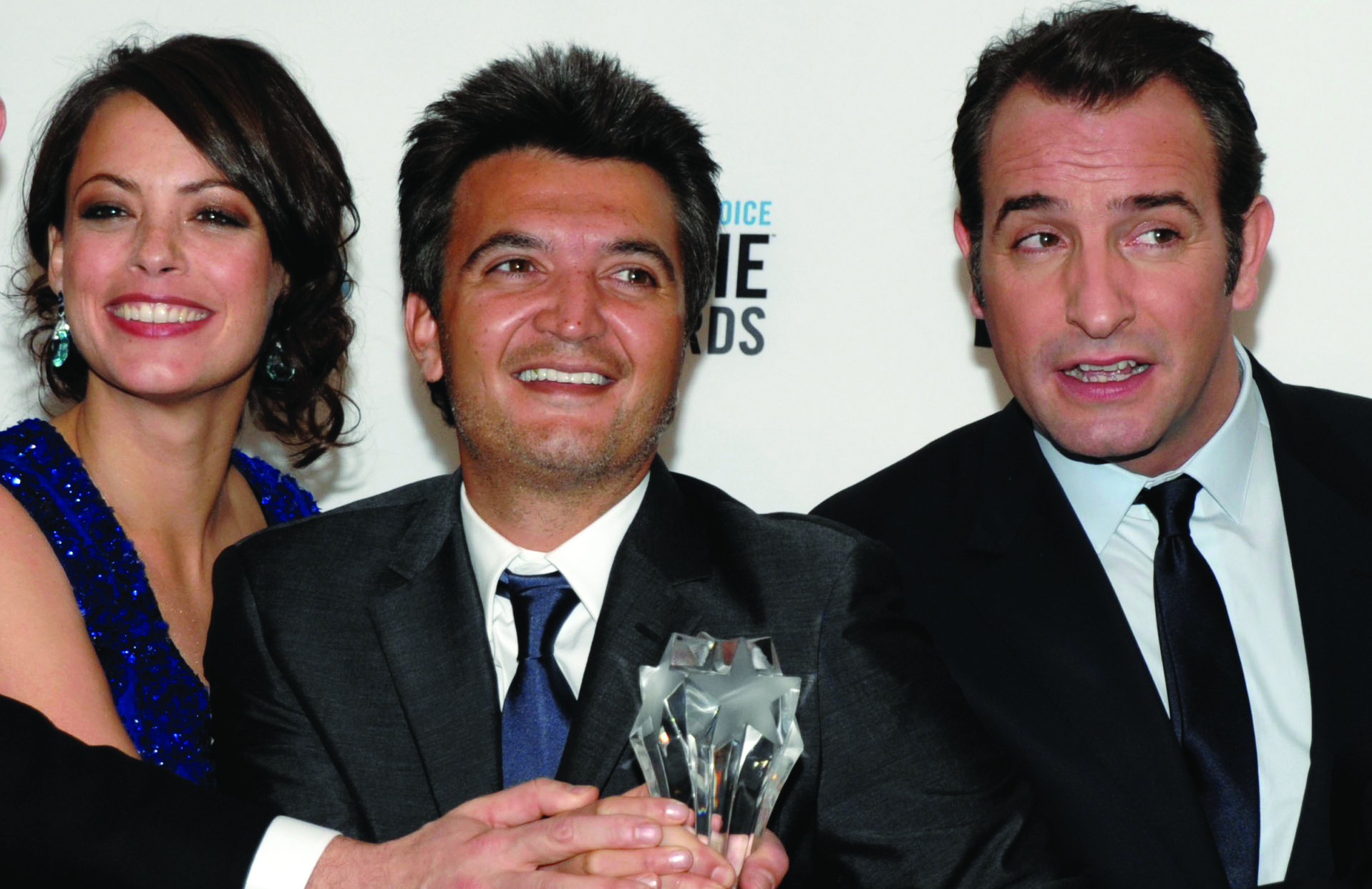John McGovern
Viewpoints Editor
“I won’t talk. I won’t say a word!” George Valentin screams in silence at the opening of the film, “The Artist.” Strapped in an electric chair, tortured for information, Valentin (Jean Dujardin) refuses to succumb to his captors’ demands for information. It’s a scene from Valentin’s new film, “A Russian Affair,” screened before a lavish crowd in a packed theatre. After the feel-good ending, Valentin smiles at the applause -— except the viewer only sees an enthusiastic audience smoking fat cigars and smacking their hands together. It’s one of the first laughs in the movie, and the first in many instances where Director Michel Havanavicius takes the limitations of a silent film and reworks them to his advantage.
For clarity’s sake, yes, the actors do not talk in the film. It’s also shot in black-and-white, in addition to several other tweaks in camerawork to create the impression of a film from the 20’s. A passionate score accompanies the lack of spoken dialogue, so you don’t have to fear that your breathing is the loudest sound in the room.
“The Artist” focuses on silent film star Valentin, the most celebrated actor of his time. Among his admirers includes aspiring actress Peppy Miller (Berenice Bejo), who develops chemistry on and off screen with Valentin after a happenstance meeting following the premiere. A short time later, studio boss Al Zimmer (John Goodman) pulls Valentin in to listen to the studio’s first sound test. Valentin scoffs at the performance, declaring, “If that’s the future, you can have it.” Valentin quits to direct his own silent film. At the same time Peppy Miller rises in popularity as the new face of the “talkies.”
The depression hits just as Valentin needs a big break, and after his silent film tanks, he is forced to sell most of his possessions to pay for bills and, increasingly, booze. His despondent nature and alcoholism leads to fights with mirages and blacking out at bars, leaving only his butler (James Cromwell) and his faithful dog to support him. As the growing divide between Peppy’s skyrocketing success and Valentin’s despair climaxes, Havanavicius leads the audience into believing either Peppy will prop Valentin back on his feet, or his stubbornness will lead him to succumb to his obsolescence alone.
Themes like progress, individuality and loyalty thrive through the characters’ plights and onscreen metaphors, in particular, the films within the film. Despite a less than complex plot, Havanavicius manipulates situations to consistently evoke emotional responses.
Aiding him in this quest include supporting performances by Goodman and Cromwell, who solidify the realistic appearance of this archaic form. Goodman’s characteristically bombastic personality translates surprisingly well merely through the anger in his eyes and the jiggle in his jowls. Bejo performs admirably as Peppy Miller, but it’s Dujardin’s presence that really grants this film its momentum.
At times the movie can present itself as a little over the top, especially in the melodramatic first act. And some viewers may feel the basic storyline leaves little to the imagination. However, a dramatic sequence in sound roughly halfway through the film sharply and effectively transitions the piece into a powerful narrative that only contemporary actors could achieve. Cinematography and setpieces, including a triumphant dance number, overshadow the appearance of a boring romantic tale.
Six years after the last black-and-white film received a nomination for Best Picture (2006’s “Good Night and Good Luck”) and almost a decade after “Freedom Fries,” a French silent black-and-white film leads the race for what some consider the grand prize of annual cinema. When it comes to acting and directing the film succeeds in capturing the attention of an audience overloaded with technological advances, portraying the struggle by way of nostalgia and progress in the fewest of words. It’s going to be awkward if your cell phone rings, though.

